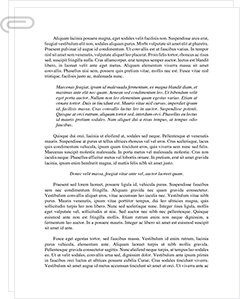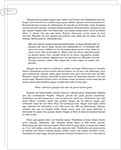 Study Document
Study Document
Juvenile Court Philosophy the Office Essay
Pages:5 (1751 words)
Sources:2
Subject:Crime
Topic:Juvenile Crime
Document Type:Essay
Document:#24143843
They must also determine what types of delinquent behavior and youth violence are causing the greatest concern in the community. (Medaris, 1996, para.# 5)
As can be seen from the above statement of the first step in implementing the SHOCAP program in any community, first look at statistics on juvenile crime and second ask the community what it is most afraid of with regard to juvenile crime. This intention seriously contradicts the intention of the juvenile justice system to demonstrate focus on individual cases of each juvenile offender and give it adequate time for understanding of all mitigating circumstances, rather than seeking to understand outside fear of crime. Many factors contribute to public opinion of crime and not all of those factors are realistically and truly connected to real crime occurrences and/or statistics. The "mitigating" factors of public crime fear are in dire need of reevaluation, starting with unrealistic and dramatic emphasis of violent crime (and especially youth crime) in the media and elsewhere that actually gives the public a false sense of fear, even when crime statistics are falling rather than increasing, which has been the case since prior to the retribution movement in the adult and juvenile courts.
Resources
Cothern, L. (November 2000) "Juveniles and the Death Penalty," Office of Juvenile Justice and Delinquency Prevention (OJJDP) Coordinating Council on Juvenile Justice and Delinquency Prevention. Accessed July, 10, 2008
http://www.ncjrs.gov/pdffiles1/ojjdp/184748.pdf
Medaris, M (August 1996) "Serious Habitual Offender Comprehensive…
Sample Source(s) Used
Resources
Cothern, L. (November 2000) "Juveniles and the Death Penalty," Office of Juvenile Justice and Delinquency Prevention (OJJDP) Coordinating Council on Juvenile Justice and Delinquency Prevention. Accessed July, 10, 2008
http://www.ncjrs.gov/pdffiles1/ojjdp/184748.pdf
Medaris, M (August 1996) "Serious Habitual Offender Comprehensive Action Program. (SHOCAP)" Office of Juvenile Justice and Delinquency Prevention (OJJDP) Factsheet Accessed July, 10, 2008, http://www.ncjrs.gov/txtfiles/shocap.txt
Related Documents
 Study Document
Study Document
Juvenile Justice in the Beginning
The state was not as the enemy but as a protector, as the ultimate guardian. There was a feeling that parents were either unwilling or unable to guide children towards good citizenship and thus intervention of public authorities was necessary (Mack, 1909). Today the philosophy surrounding juvenile court is still a one of protector. Things are done with the best interest of the child in mind. The idea is to
 Study Document
Study Document
Juvenile Delinquency Is the Legal
S.A.). Most youths in state facilities have also been held in detention centers, though they tend to be more chronic, serious offenders. Every day, averages of 54,500 youths are incarcerated in U.S. detention or correctional institutions. These incarcerations may harm the youths and make it more likely they will continue offending. It is important, where possible, to intervene with youth and families prior to detention or incarceration. No single factor
 Study Document
Study Document
Juvenile Delinquents
Juvenile Justice Juvenile delinquents Shifting to a restorative model, acknowledging the needs of victims Juvenile justice: Shifting to a restorative model, acknowledging the needs of victims The adult justice system in America has long focused upon retribution and community restoration as well as rehabilitation of offenders. Victims must be 'made whole,' not just offenders within the adult system. However, the juvenile justice system has had a far less clear focus upon the restoration of justice
 Study Document
Study Document
Juvenile Delinquency the Shape of
Findings revealed the importance of early intervention and other schooling factors in reducing delinquency. They also emphasized the benefits of early intervention as one effective measure in preventing delinquency (Mann & Reynolds). The study established the connection between a large-scale preschool program and reductions in the incidence, frequency and severity of juvenile crime (Mann & Reynolds, 2006). The connection is between early social functioning and severe behavioral problems. Social functioning
 Study Document
Study Document
Juvenile Justice System
Criminal Justice Juvenile justice Gang Control Methods Descriptions Law Enforcement Efforts The traditional police personnel from the youth unit control the gang. Police officers from youth or detective unit are charged with controlling activities of the gang. Setting up of gang unit within the police to exclusively control gang activity. The Chicago Police Department set up gang crime section to process information on gangs and gang leaders. The Los Angeles Police Department engages in crime breaking activities that involve
 Study Document
Study Document
Juvenile Justice System History of
What is significant about youth court is that the attorneys, jurors and even the judges are themselves adolescents and many times former defendants (Butts, Hoffman & Buck, 1999). The foundational premise or ideology behind youth courts is that the youth's judgment from their peer cohorts may be more convincing and in the long run beneficial than judgment handed down by officials and adults in the judicial system. Because many



